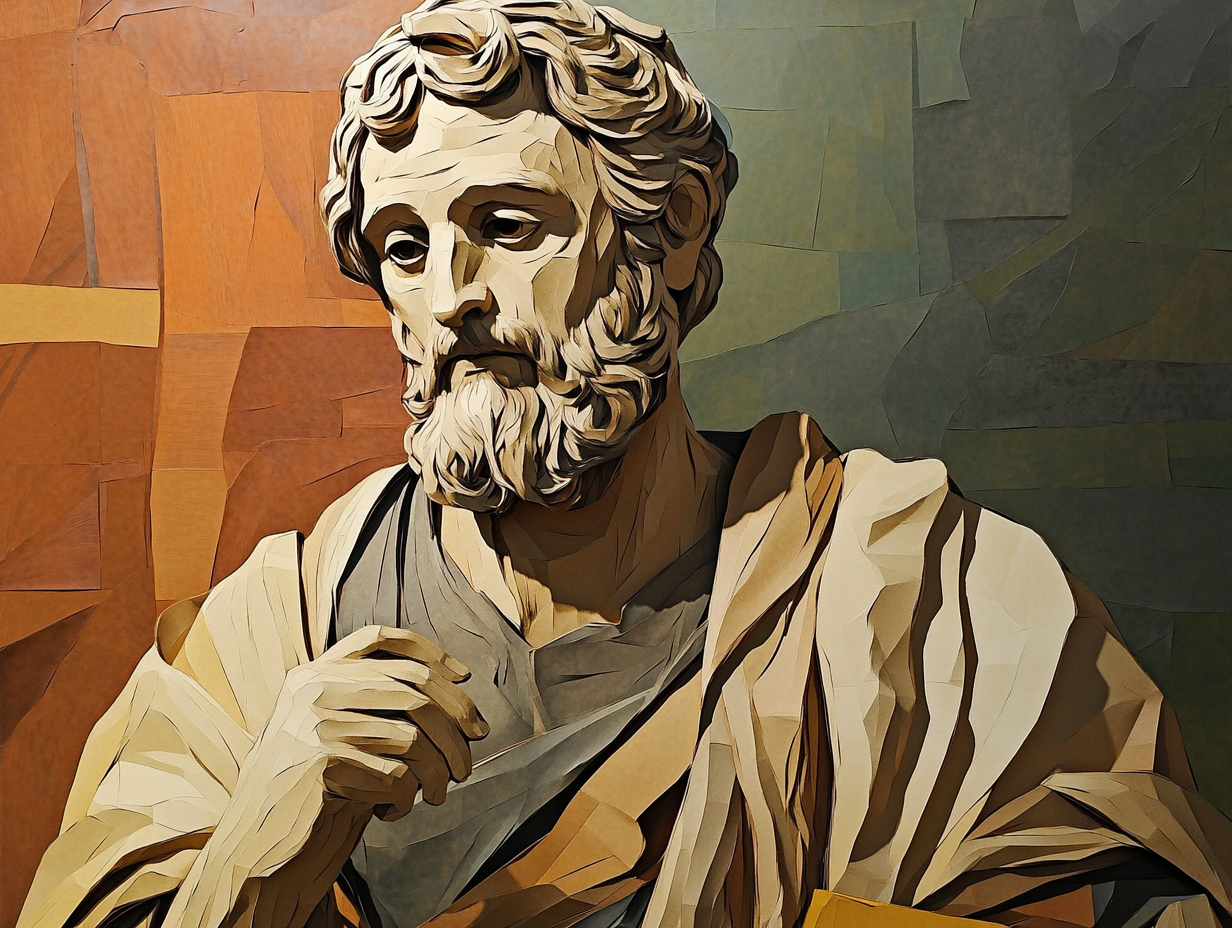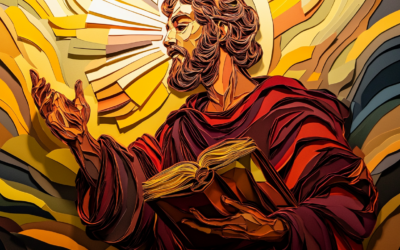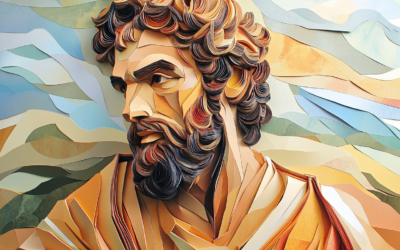Who Was Philip?
Philip was one of the Twelve Apostles, the inner circle of Jesus’ followers. He wasn’t the same Philip who later popped up in Acts (Philip the Evangelist, a different guy). This Philip came from Bethsaida, the same fishing town as Peter and Andrew. That means he probably had a background in hard, physical labor, a no-nonsense approach to life, and maybe even a bit of that blunt, Galilean attitude.
The Gospels don’t tell us much about Philip’s personal life, but they do give us a handful of moments that paint a picture: a practical man, a bit of a skeptic, and someone who always needed things spelled out for him.
How Did He Become an Apostle?
Philip shows up early in Jesus’ ministry. In John 1:43-46, he’s one of the first people Jesus personally calls:
“Jesus found Philip, and He said to him, ‘Follow Me.'”
John 1:43 (NASB)
Unlike Peter, who got a dramatic speech about becoming a “fisher of men,” Philip just got a simple, two-word invitation. And he actually responded pretty quickly. The first thing he did was grab his friend Nathanael (also known as Bartholomew) and tell him:
“We have found Him of whom Moses wrote in the Law, and the prophets also wrote: Jesus, the son of Joseph, from Nazareth!”
John 1:45 (NASB)
Nathanael famously responded with skepticism: “Can anything good be from Nazareth?” But Philip, instead of arguing, just said, “Come and see.”
Philip, The Skeptic
Philip had a hard time taking things at face value. Every time he appears in the Gospels, he’s questioning something.
The Feeding of the Five Thousand (John 6:5-7)
Jesus looks at the hungry crowd and asks Philip, “Where are we to buy bread so that these people may eat?” Philip doesn’t think about miracles. He doesn’t assume Jesus has a plan. Instead, he does the math:
“Two hundred denarii worth of bread is not enough for them, for each to receive just a little!”
John 6:7 (NASB)
Show Us the Father (John 14:8-9)
At the Last Supper, Jesus is talking about His connection to the Father. Philip interrupts:
“Lord, show us the Father, and it is enough for us.”
John 14:8 (NASB)
Jesus responds with what is almost exasperation:
“Have I been with you for so long, and yet you have not come to know Me, Philip? The one who has seen Me has seen the Father.”
John 14:9 (NASB)
The Greeks at Passover (John 12:20-22)
Some Greeks come to see Jesus. Instead of taking them straight to Him, Philip hesitates and checks with Andrew first. He’s always looking for confirmation before he acts.
The World Philip Lived In
Philip the Apostle in First-Century Judea
Philip the Apostle navigated his faith within the complex socio-political landscape of first-century Judea, a region marked by Roman occupation, diverse Jewish sects, and fervent Messianic hopes.
Roman Occupation and Governance
In 63 BCE, the Roman general Pompey conquered Jerusalem, integrating Judea into the Roman Republic. Initially, Rome installed local leaders like Herod the Great to govern as client kings, maintaining a semblance of autonomy while ensuring allegiance to Rome. After Herod’s death in 4 BCE, his kingdom was divided among his sons, but due to misrule and unrest, Judea came under direct Roman administration in 6 CE, becoming the province of Judaea. Roman prefects, such as Pontius Pilate, oversaw political, military, and fiscal matters, operating from Caesarea Maritima, though they intervened in Jerusalem during major festivals to maintain order.
References: enterthebible.org, Wikipedia, myjewishlearning.com
Economic Pressures and Social Tensions
The Roman administration imposed heavy taxation on the Judean populace, exacerbating economic hardships. Tax collectors, often viewed as collaborators, were despised by the local population. The presence of Roman soldiers in cities and towns served as a constant reminder of foreign domination, fueling resentment and a longing for liberation.
Reference: rsc.byu.edu
Diverse Jewish Sects and Messianic Expectations
First-century Judaism was not monolithic but comprised various sects with differing beliefs and expectations:
- Pharisees: Emphasized strict adherence to the Torah and oral traditions, anticipating a Messiah who would uphold religious law and restore Israel’s glory.
- Sadducees: Comprised mainly of the priestly and aristocratic classes, they maintained the status quo, showing little interest in a coming Messiah.
- Essenes: A separatist group that withdrew from mainstream society, they expected two Messiahs—one priestly and one royal—to purify and lead Israel.
References: reformedreader.wordpress.com, cjfm.org
Amid these varied expectations, many Jews yearned for a political savior, a descendant of King David, who would overthrow Roman rule and reestablish an independent Israel. This hope was deeply rooted in prophecies and the collective memory of past deliverance.
Philip’s Perspective and the Challenge of a Suffering Messiah
Philip, hailing from Bethsaida in Galilee, likely shared the common hope for a militant Messiah. The notion of a suffering and crucified Messiah was a profound paradox, challenging prevailing expectations. Crucifixion was a Roman method of execution reserved for the lowest criminals, symbolizing utter humiliation. For Philip and his contemporaries, reconciling Jesus’ crucifixion with Messianic aspirations required a radical redefinition of victory and divine intervention.
Scholarly Insights
Scholars note that the diversity of Messianic expectations in first-century Judea reflects a society grappling with foreign oppression and internal divisions. The Dead Sea Scrolls, for instance, reveal a community anticipating both a priestly and a royal Messiah, underscoring the multifaceted nature of Jewish eschatological hopes. This complexity provides context for understanding the varied responses to Jesus’ ministry and the challenges faced by his disciples, like Philip, in comprehending his mission.
References: reformedreader.wordpress.com, cjfm.org
Philip’s environment was one of political subjugation, economic strain, and spiritual yearning. Navigating these dynamics, he, alongside others, had to reconcile traditional Messianic hopes with the unexpected path of a Messiah who preached love, sacrifice, and a kingdom not of this world.
Philip After the Resurrection
Philip, once the cautious and questioning disciple, took on an entirely new identity after Jesus’ resurrection. The same man who had asked Jesus, “Lord, show us the Father, and it is enough for us” became one of the boldest proclaimers of Christ.
“Philip *said to Him, “Lord, show us the Father, and it is enough for us.” Jesus *said to him, “Have I been with you for so long a time, and yet you have not come to know Me, Philip? The one who has seen Me has seen the Father; how can you say, ‘Show us the Father’?”
John 14:8-9 (NASB)
The Book of Acts provides the most concrete biblical record of his missionary work. Philip is seen preaching in Samaria, where he performed miracles and exorcisms, leading many to faith.
“Now those who had been scattered went through places preaching the word. Philip went down to the city of Samaria and began proclaiming the Christ to them. The crowds were paying attention with one mind to what was being said by Philip, as they heard and saw the signs which he was performing. For in the case of many who had unclean spirits, they were coming out of them shouting with a loud voice; and many who had been paralyzed or limped on crutches were healed. So there was much rejoicing in that city.”
Acts 8:4-8 (NASB)
He was also pivotal in the conversion of the Ethiopian eunuch, an event that marked one of the earliest expansions of the Gospel beyond Jewish communities.
“Then Philip opened his mouth, and beginning from this Scripture he preached Jesus to him. As they went along the road, they came to some water; and the eunuch *said, ‘Look! Water! What prevents me from being baptized?’ And he ordered that the chariot stop; and they both went down into the water, Philip as well as the eunuch, and he baptized him.”
Acts 8:35-38 (NASB)
This particular moment has been emphasized by scholars like F.F. Bruce, who noted that it signified the Gospel’s reach toward the Gentile world.
Church tradition adds more to Philip’s story, though historical accuracy can be debated. Early Christian writers such as Polycrates of Ephesus (c. 190 AD) suggest Philip spent his later years in Hierapolis, a city in Asia Minor known for its hot springs and pagan worship. Papias of Hierapolis, a 2nd-century bishop, reportedly mentioned Philip’s daughters as prophetesses, reinforcing the idea that Philip had an enduring presence in the region.
As for his martyrdom, accounts vary. The Acts of Philip, an apocryphal text from the 4th century, describes him being crucified upside-down, much like Peter. Other sources claim he was stoned to death. Regardless of the precise method, Philip’s transformation from uncertainty to unwavering conviction is evident. The man who once hesitated to believe now willingly laid down his life for the Gospel.
Philip’s post-resurrection journey reflects a larger pattern among the disciples—timid men turned fearless evangelists. He stands as a testament to what happens when doubt meets the reality of the risen Christ.
What Did Philip Believe?
Philip started as a man who needed proof, but he became someone willing to trust. His journey is one of moving from skepticism to faith. He didn’t start out with rock-solid belief—he questioned, hesitated, and overanalyzed. But in the end, he saw enough to stake his life on Jesus.
Why Does Philip Matter?
Philip is for the doubters, the ones who need a little more time, a little more evidence. He proves that you don’t have to start with unshakable faith to follow Jesus—you just need to be open to seeing what’s in front of you.
And when you do? You might just change the world.
Scripture quotations taken from the (NASB®) New American Standard Bible®, Copyright ©, 2020 by The Lockman Foundation. Used by permission. All rights reserved. lockman.org









0 Comments